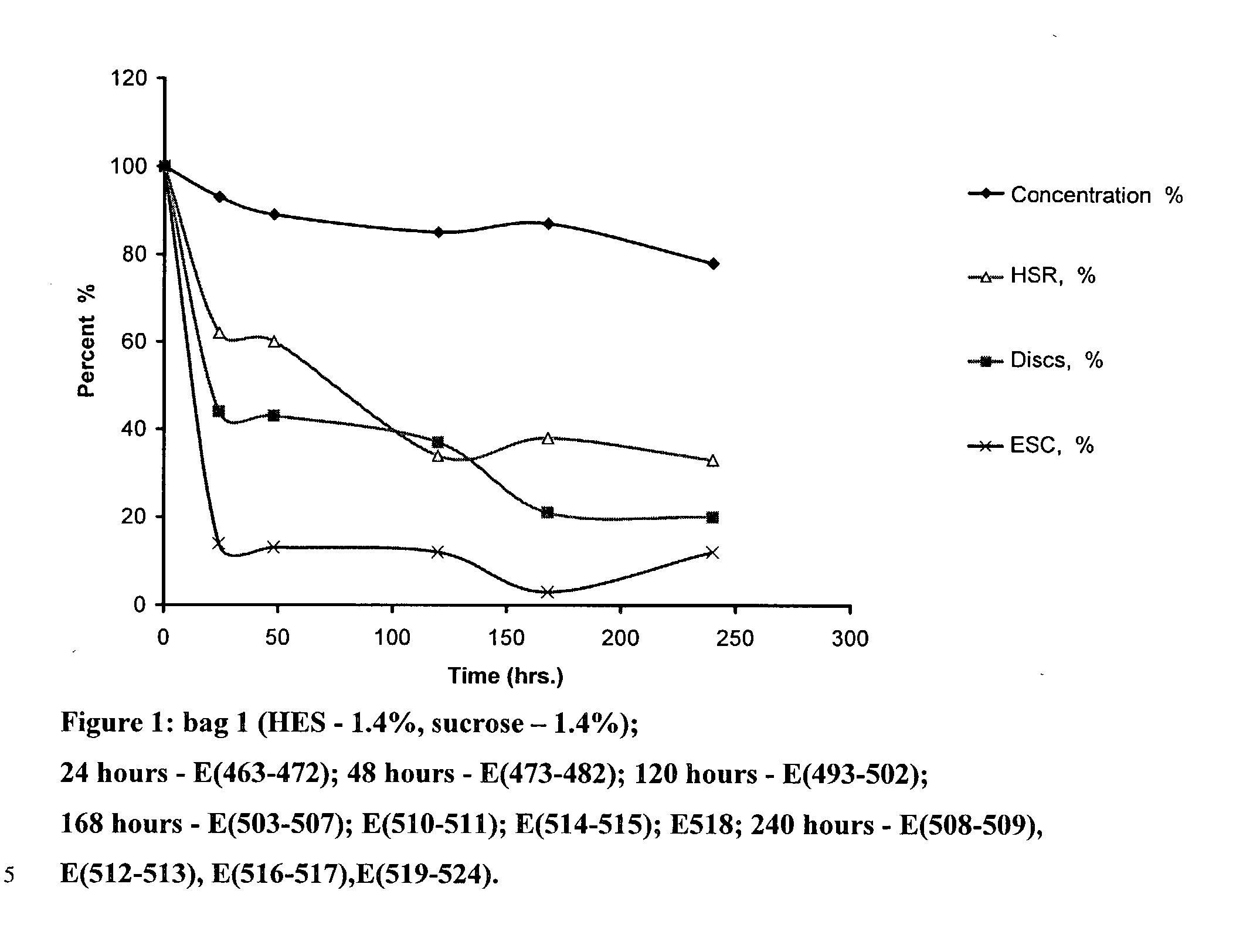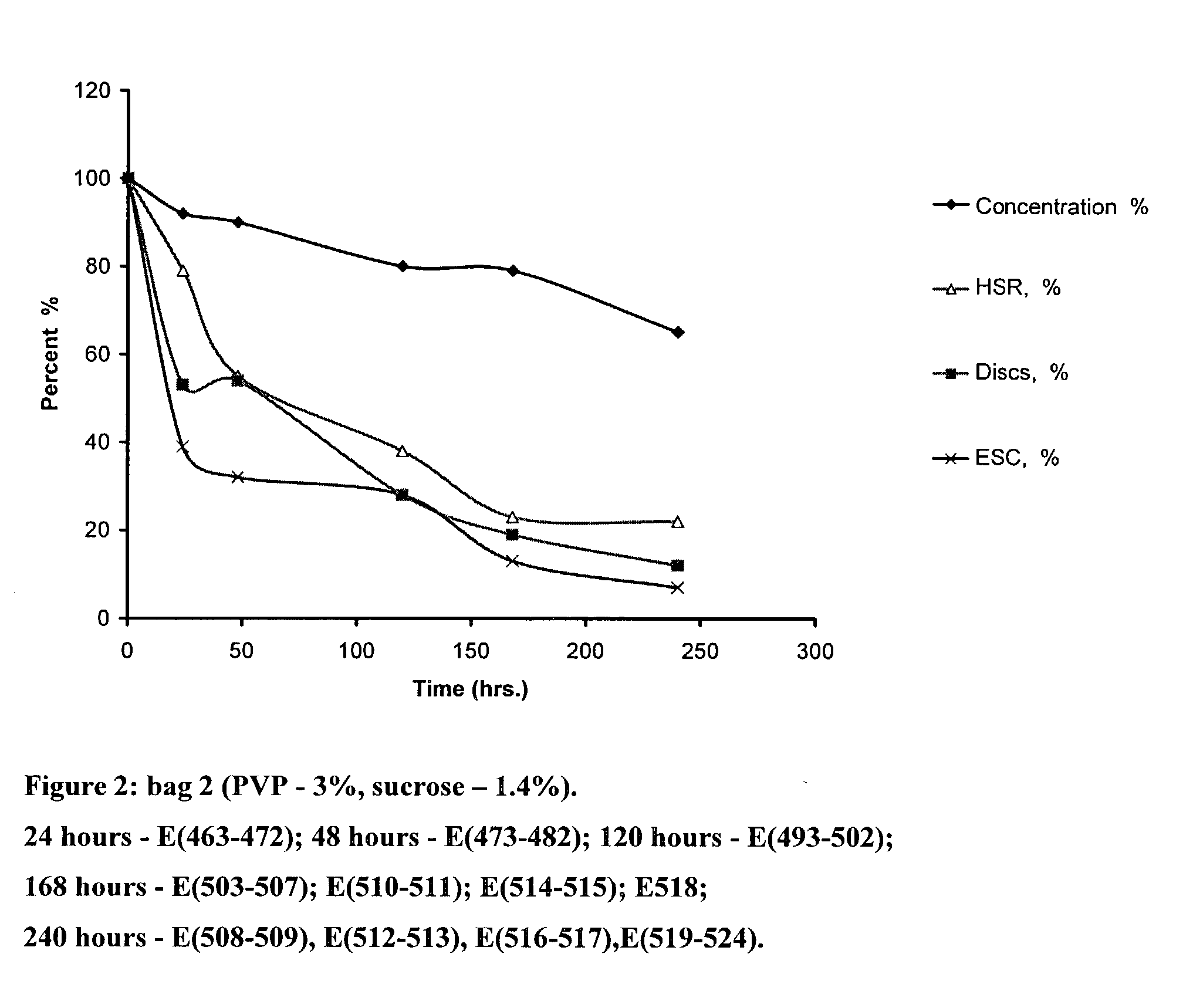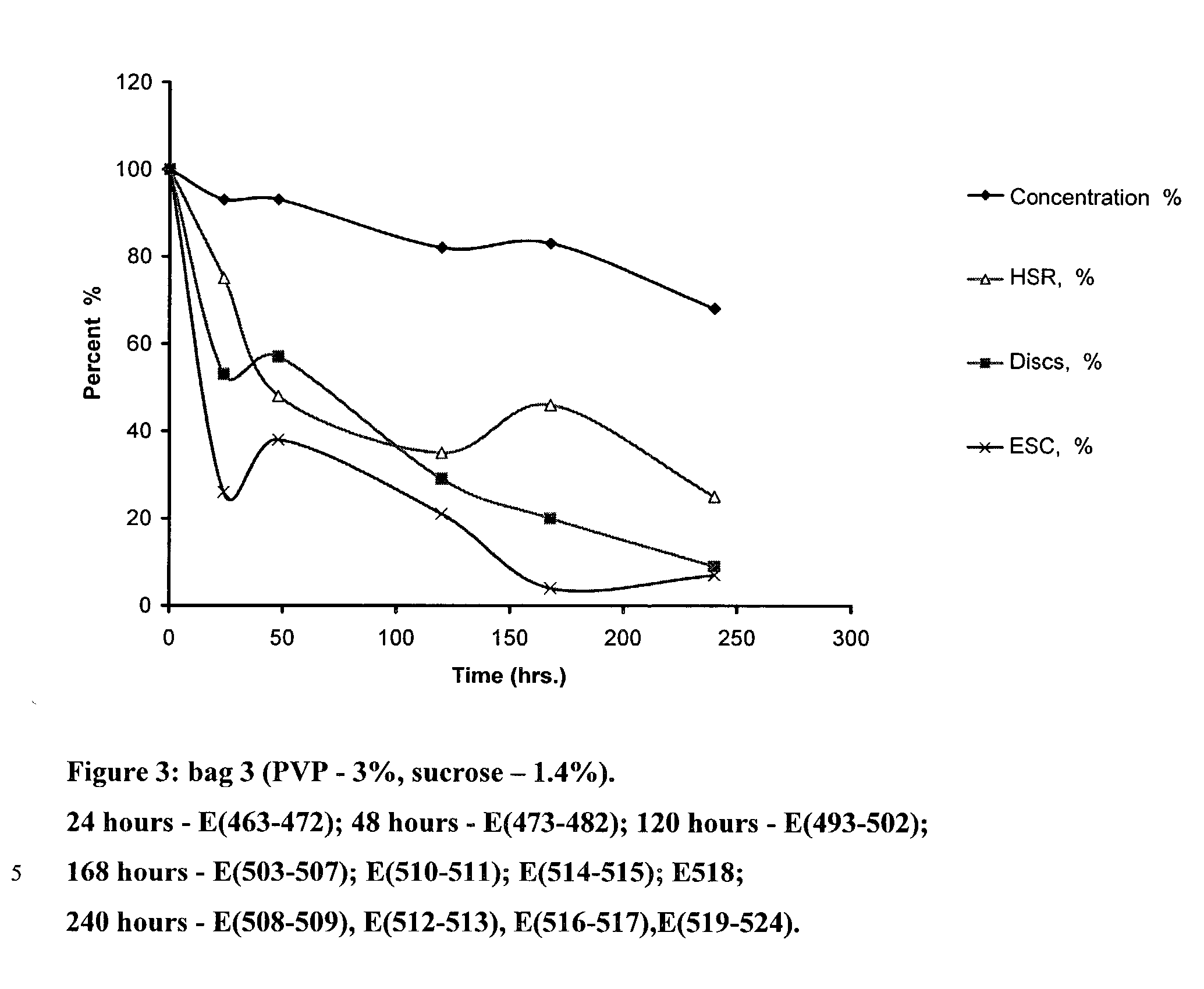Preservation of blood platelets at cold temperatures
a technology of blood platelets and cold temperatures, which is applied in the field of preservation of blood platelets at cold temperatures, can solve the problems of loss of clinical usefulness, limited storage time, and relatively short storage tim
- Summary
- Abstract
- Description
- Claims
- Application Information
AI Technical Summary
Benefits of technology
Problems solved by technology
Method used
Image
Examples
example 2
Summary on Stages E(508-509), E(512-513), E(516-517), E(519-524)
[0067] In this example, the possibility of saving discoid platelets and their functionality in gelling solutions, containing starch--1.4%, sucrose--1.4% and PVP--3% at t+2C by cooling platelets at the rate 0.2 degree C. / sec. at t+2C and t-3C under atmospheric pressure, was investigated.
[0068] Solutions, Conditions, Test Results
[0069] The PC for experiments was prepared as follows:
[0070] The whole blood collected from one donor was centrifuged at acceleration 1740 g for 4 minutes at t+22C. The PRP was extracted in a satellite bag and was centrifuged at acceleration 4323 g for 6 minutes at temperature +22C. The supernatant layer of the plasma was excreted and the volume of suspended plasma with the platelet plaque made 60 ml. The bags with plasma containing platelet plaques were placed on the rocker at t+22C, where they were rested for 20 to 22 hours. These bags were assayed and the platelet concentration in the PC was id...
example 3
Summary on Stages E(544-548)
[0108] In this example, the possibility of saving discoid platelets and the platelet functionality in gelling solution containing starch--1.4%, sucrose--1.4%; and PVP--1%, 2%, 3% at t+2C by cooling down to t+2C at the rate 1 degree C. / sec. under atmospheric pressure, was investigated.
[0109] Solutions, Conditions, Test Results
[0110] The PC for experiments was prepared as follows:
[0111] The whole blood collected from one donor was centrifuged at acceleration 1740 g for 4 minutes at t+22C. The PRP was extracted in a satellite bag and was centrifuged at acceleration 4323 g for 6 minutes at temperature +22C. The supernatant layer of the plasma was excreted and the volume of suspended plasma with the platelet plaque made 60 ml. The bags with plasma containing platelet plaques were placed on the rocker at t+22C, where they were rested for 20 to 22 hours. These bags were assayed and the platelet concentration in the PC was identified. Then the assay taken from th...
PUM
 Login to View More
Login to View More Abstract
Description
Claims
Application Information
 Login to View More
Login to View More - R&D
- Intellectual Property
- Life Sciences
- Materials
- Tech Scout
- Unparalleled Data Quality
- Higher Quality Content
- 60% Fewer Hallucinations
Browse by: Latest US Patents, China's latest patents, Technical Efficacy Thesaurus, Application Domain, Technology Topic, Popular Technical Reports.
© 2025 PatSnap. All rights reserved.Legal|Privacy policy|Modern Slavery Act Transparency Statement|Sitemap|About US| Contact US: help@patsnap.com



